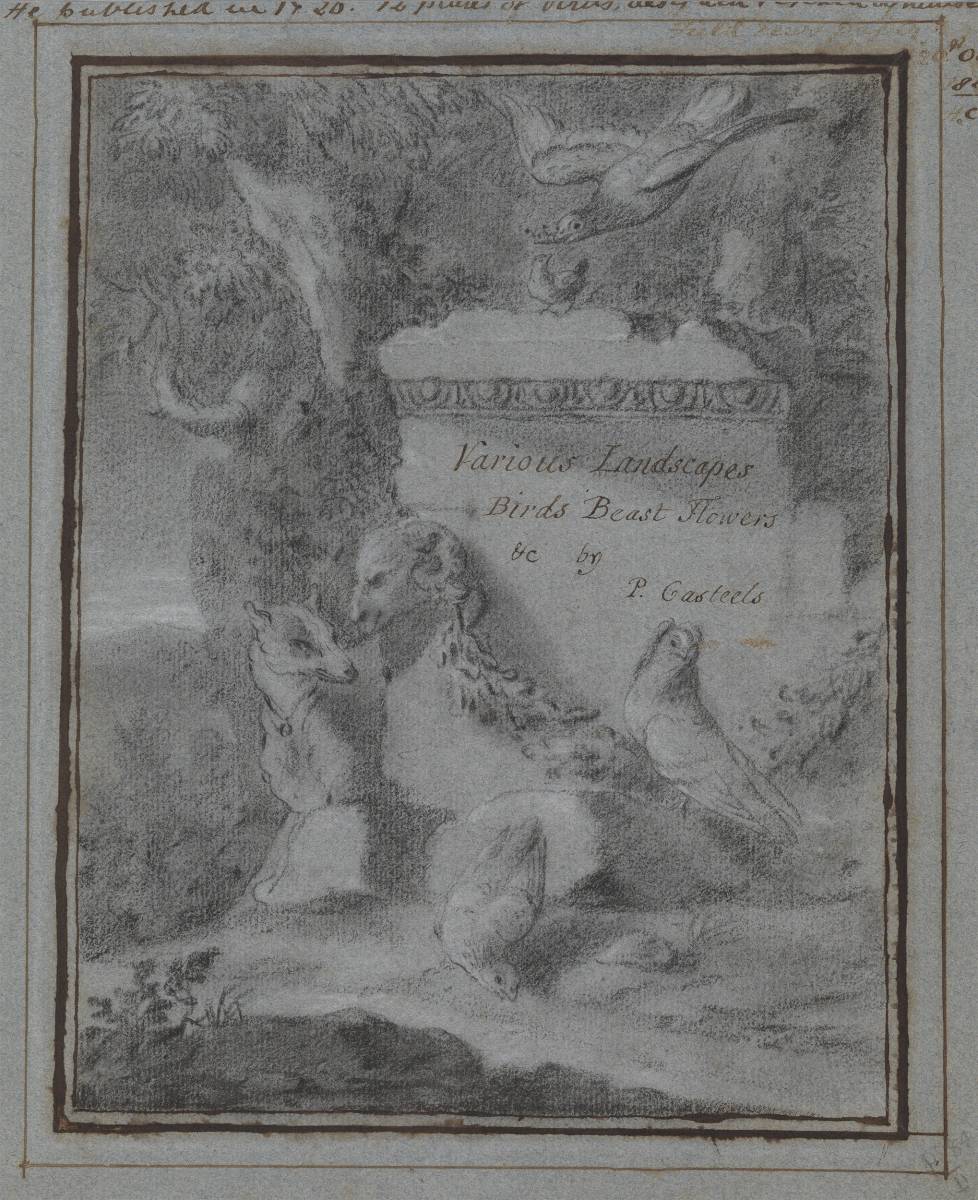This exceptionally rare drawing was made by the Flemish painter, dealer and entrepreneurial printmaker Pieter Casteels. The landscape drawing, showing a number of birds being eyed by a fox, in a landscape with a Roman funerary cippus inscribed: ‘Various Landscapes Birds Beast Flowers &c by P. Casteels.’ It is possible that this drawing was one of the original designs for the set of prints which Casteels published in 1726. It is one of only a handful of drawings known by Casteels, who was a pioneer in the production of decorative prints.
Casteels was born in Antwerp, Southern Netherlands, on 3 October 1684, the son of Pieter Casteels who was also a painter. He was trained by his father and in 1708 arrived in London with his brother-in-law, Peter Tillemans, having been offered work by a picture dealer. He settled readily into London's artistic community, subscribing to Kneller's Great Queen Street academy in 1711 and becoming a member of the Rose and Crown Club. Although he returned briefly to Antwerp in 1716, Casteels settled permanently in England where he was a leading painter of flowers and exotic birds, chiefly for overdoors and chimney-pieces. His range as a decorative painter also encompassed small history pictures in architectural settings. But painting provided only a part of his income: he also imported fine pictures from the continent and sold them well, 'having had much business and reputation.’
In 1726 Casteels successfully launched a subscription for a set of twelve prints of birds which he had etched after his own designs, 'this being the first work in that kind of his doing, (except some two or three other little plates as tryals)'. This chalk drawing seems to have been the original design for the frontispiece. As such it offers a rare and significant insight into the process of producing prints at this date. Mounted on an early eighteenth-century backing-sheet which contains the remains of an inscription: ‘he published twelve plates in 1726’ suggesting that this drawing was early appreciated by collectors. The success of his twelve plates encouraged him to take a third share in another publishing venture. Twelve Months of Flowers was backed by three entrepreneurs: the designer Casteels, the engraver Henry Fletcher, and the gardener Robert Furber from whose Kensington nursery all the varieties depicted in the prints could be bought. Together they ventured £500 but found 457 people prepared to subscribe 2 guineas each for the set, allowing a handsome profit from the subscription edition alone.


